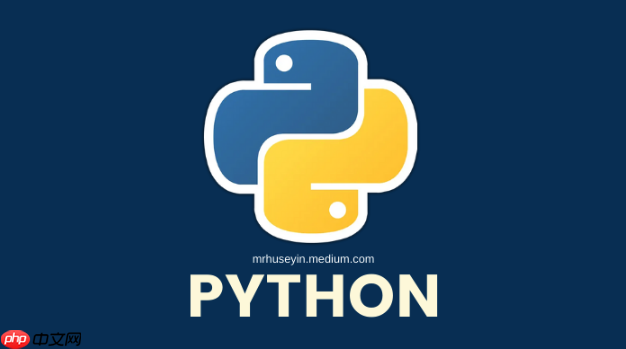Python多线程结合事件驱动适用于I/O密集型任务,通过threading.Event实现线程间通知,queue.Queue支持多生产者消费者模式,Condition可控制复杂同步逻辑,合理使用同步原语能构建高效事件处理系统。

Python中的多线程与事件驱动机制结合,可以实现高效的并发任务处理,尤其适用于I/O密集型场景,比如网络服务、GUI应用或实时数据监听。虽然Python由于GIL(全局解释器锁)的限制在CPU密集型任务中多线程优势不明显,但在I/O等待期间释放GIL的特性,使得多线程在事件监听类任务中依然有实用价值。
事件驱动编程的核心是“响应式”模型:程序不主动轮询状态,而是注册回调函数,当特定事件发生时(如数据到达、定时器触发),系统自动调用对应处理逻辑。
在多线程环境下,可以创建一个独立线程专门负责事件监听,其他线程执行计算或I/O任务,通过共享事件对象进行通信和协调。
threading.Event 是Python中最基础的事件同步机制。它提供 set() 和 clear() 方法来控制事件状态,wait() 方法用于阻塞等待事件被触发。
立即学习“Python免费学习笔记(深入)”;
示例代码:
import threading
import time
<h1>共享事件对象</h1><p>event = threading.Event()</p><p>def listener():
print("监听线程启动,等待事件...")
event.wait() # 阻塞直到事件被set
print("事件已被触发,开始处理...")</p><p>def trigger():
time.sleep(2)
print("触发事件")
event.set() # 触发事件,唤醒wait()</p><h1>创建并启动线程</h1><p>t1 = threading.Thread(target=listener)
t2 = threading.Thread(target=trigger)</p><p>t1.start()
t2.start()</p><p>t1.join()
t2.join()
这个例子中,listener线程通过 wait() 等待事件,trigger线程在2秒后调用 set() 触发事件,实现跨线程的事件通知。
更复杂的事件驱动系统通常使用 queue.Queue 作为事件消息的中转站。多个生产者线程将事件放入队列,消费者线程从队列中取出并处理,实现解耦和异步通信。
示例:事件类型分发
import threading
import queue
import time
<p>event_queue = queue.Queue()</p><p>def event_producer(name):
for i in range(3):
event = {'type': 'data', 'source': name, 'value': i}
event_queue.put(event)
print(f"{name} 发布事件: {event}")
time.sleep(1)</p><p>def event_consumer():
while True:
event = event_queue.get()
if event is None: # 结束信号
break
print(f"处理事件: {event}")
event_queue.task_done()</p><h1>启动消费者线程</h1><p>consumer_thread = threading.Thread(target=event_consumer, daemon=True)
consumer_thread.start()</p><h1>启动多个生产者</h1><p>threads = []
for name in ['sensor_A', 'sensor_B']:
t = threading.Thread(target=event_producer, args=(name,))
t.start()
threads.append(t)</p><h1>等待所有生产者完成</h1><p>for t in threads:
t.join()</p><h1>发送结束信号</h1><p>event_queue.put(None)
consumer_thread.join()
这种方式支持多种事件类型、多个生产者和消费者,结构清晰,适合构建模块化系统。
对于需要精确控制执行顺序或资源访问的场景,可使用 threading.Condition 或 threading.Semaphore。
例如,使用 Condition 实现“等待某一组事件全部到达后再处理”:
import threading
<p>condition = threading.Condition()
ready = False</p><p>def worker():
with condition:
print("工作线程等待准备信号...")
while not ready:
condition.wait()
print("开始执行任务!")</p><p>def coordinator():
global ready
with condition:
print("协调线程准备资源...")
time.sleep(2)
ready = True
condition.notify_all() # 通知所有等待线程
基本上就这些。Python多线程中的事件驱动主要依赖 threading.Event、queue.Queue 和 Condition 等同步原语。合理使用这些工具,可以在多线程环境中实现灵活、响应迅速的事件监听与处理机制。关键在于避免竞态条件,确保线程安全,同时不过度依赖多线程解决本可用异步IO(如asyncio)更高效完成的任务。
以上就是Python多线程如何实现事件驱动 Python多线程事件监听机制解析的详细内容,更多请关注php中文网其它相关文章!

Copyright 2014-2025 https://www.php.cn/ All Rights Reserved | php.cn | 湘ICP备2023035733号